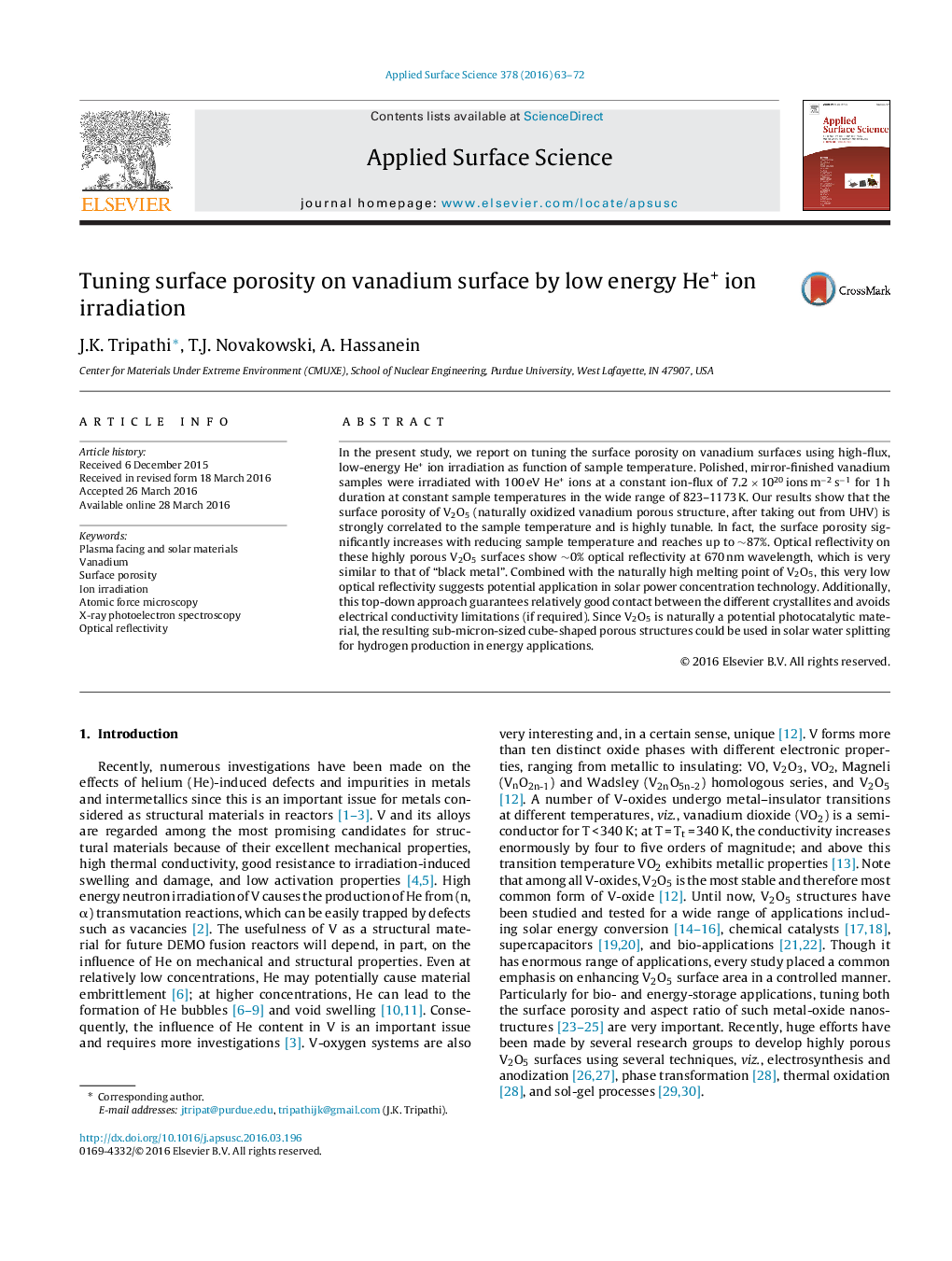| Article ID | Journal | Published Year | Pages | File Type |
|---|---|---|---|---|
| 5356046 | Applied Surface Science | 2016 | 10 Pages |
Abstract
In the present study, we report on tuning the surface porosity on vanadium surfaces using high-flux, low-energy He+ ion irradiation as function of sample temperature. Polished, mirror-finished vanadium samples were irradiated with 100 eV He+ ions at a constant ion-flux of 7.2 Ã 1020 ions mâ2 sâ1 for 1 h duration at constant sample temperatures in the wide range of 823-1173 K. Our results show that the surface porosity of V2O5 (naturally oxidized vanadium porous structure, after taking out from UHV) is strongly correlated to the sample temperature and is highly tunable. In fact, the surface porosity significantly increases with reducing sample temperature and reaches up to â¼87%. Optical reflectivity on these highly porous V2O5 surfaces show â¼0% optical reflectivity at 670 nm wavelength, which is very similar to that of “black metal”. Combined with the naturally high melting point of V2O5, this very low optical reflectivity suggests potential application in solar power concentration technology. Additionally, this top-down approach guarantees relatively good contact between the different crystallites and avoids electrical conductivity limitations (if required). Since V2O5 is naturally a potential photocatalytic material, the resulting sub-micron-sized cube-shaped porous structures could be used in solar water splitting for hydrogen production in energy applications.
Keywords
Related Topics
Physical Sciences and Engineering
Chemistry
Physical and Theoretical Chemistry
Authors
J.K. Tripathi, T.J. Novakowski, A. Hassanein,
